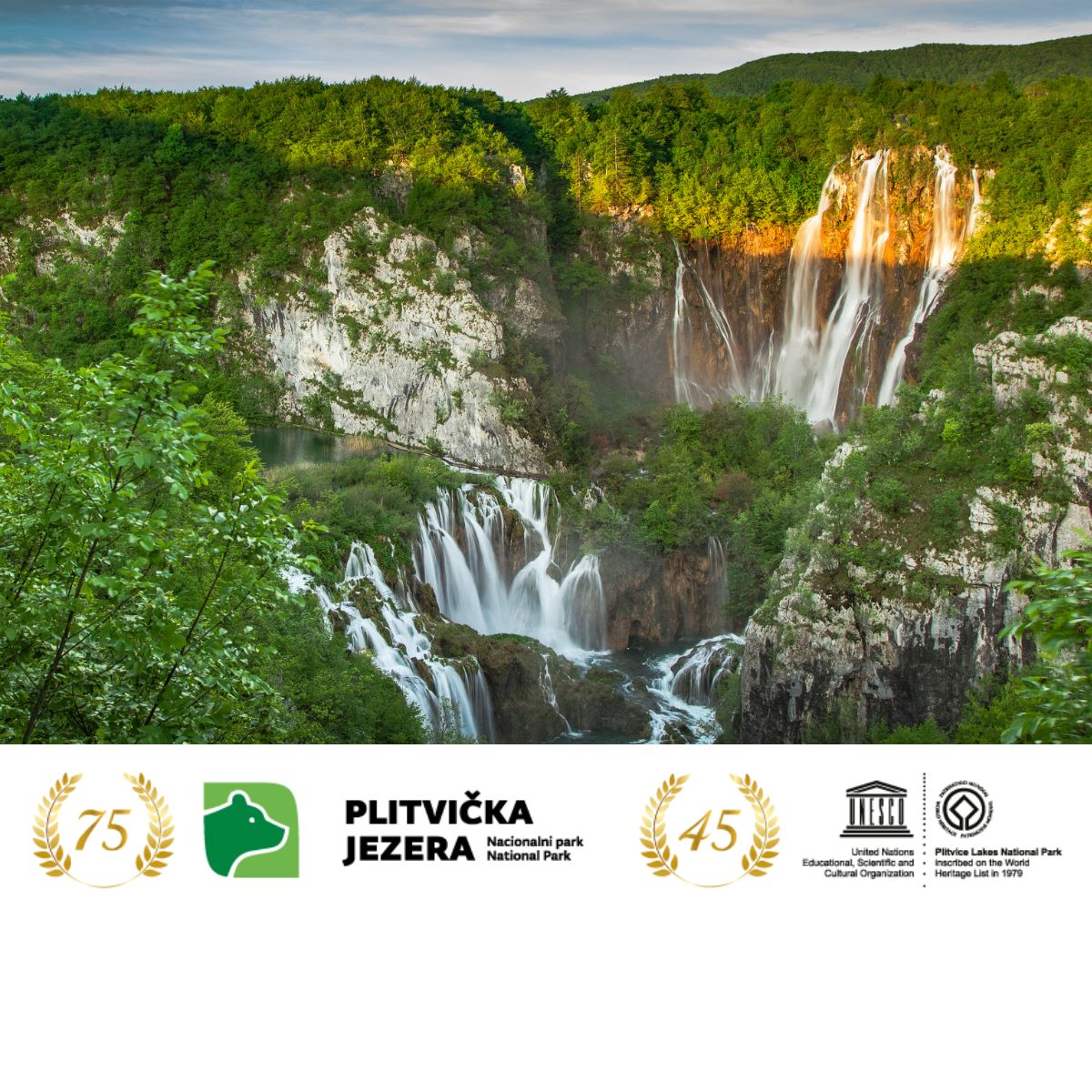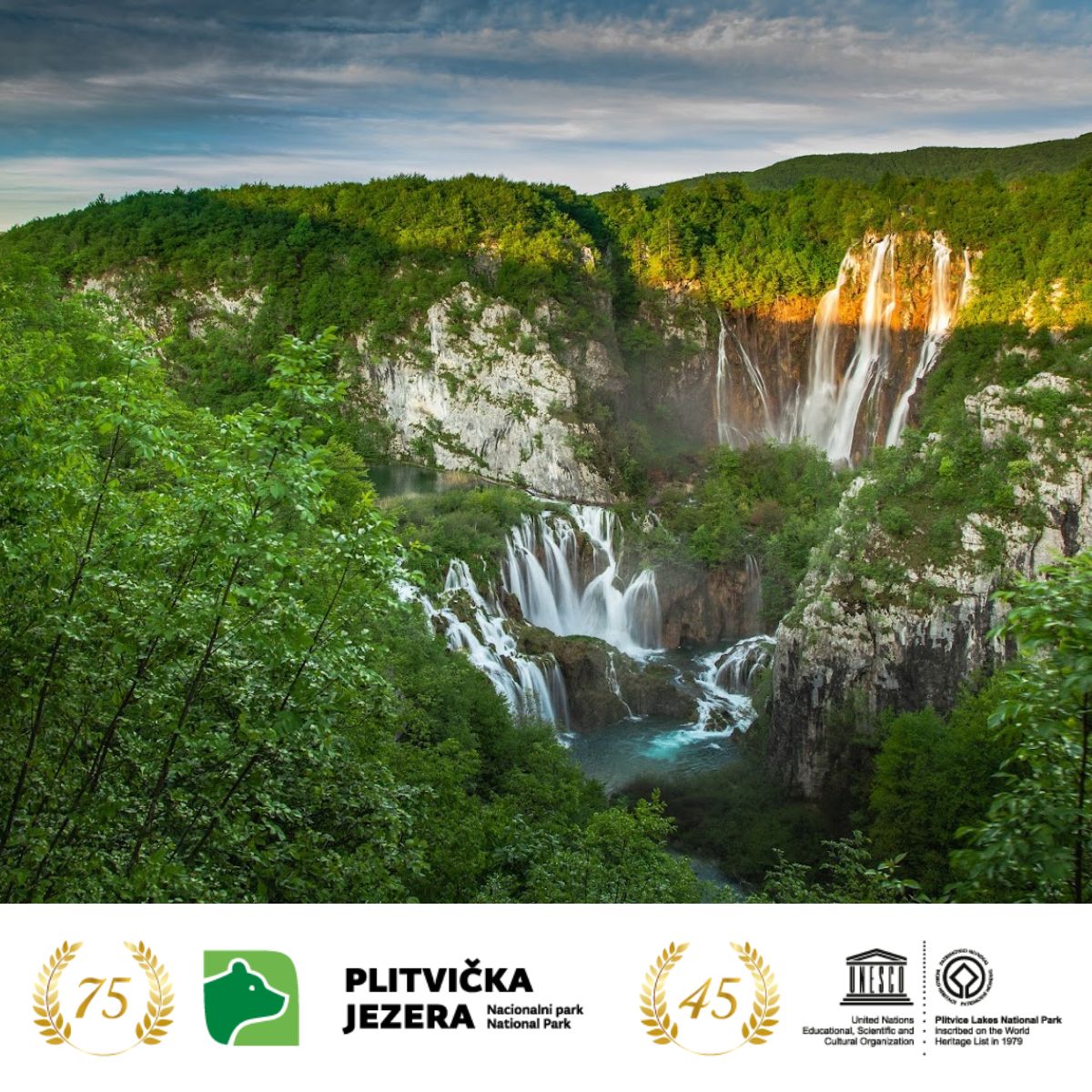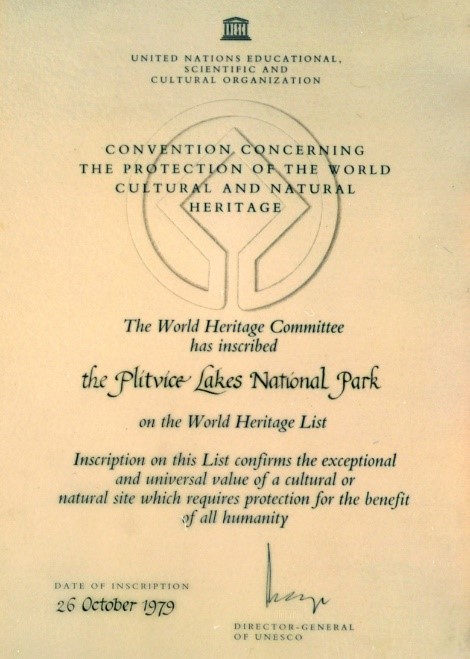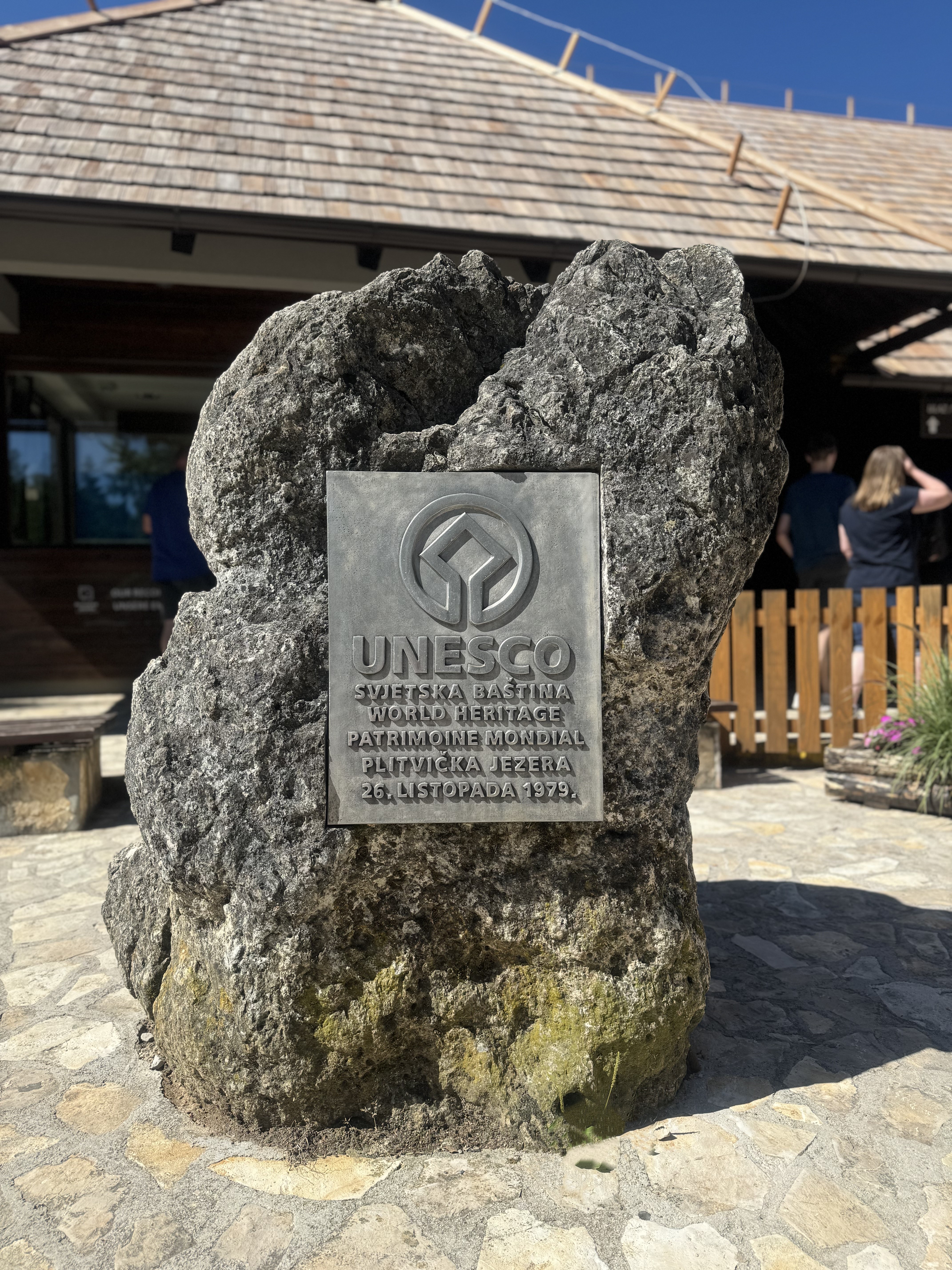This year, 2024, marks not only the 75th anniversary of the designation of the Plitvice Lakes National Park as a protected area but also the 45th anniversary of its inscription on the UNESCO World Heritage List. This significant event occurred on October 26, 1979, when the World Heritage Committee (WHC) nominated the Plitvice Lakes National Park to be inscribed on the World Heritage List as the only natural heritage site at the time.
It is important to note that the inscription of the national park on the List happened just a few years after the adoption of the Convention Concerning the Protection of the World Cultural and Natural Heritage (1972) and only a year after the first sites were inscribed as natural heritage sites (Yellowstone National Park and the Galápagos Islands in 1978). By 1976, 24 countries had ratified the Convention; by 2017, that number reached 193. One of the key considerations and bases for adopting the Convention was the idea that deterioration or disappearance of any item of the cultural or natural heritage constitutes a harmful impoverishment of the heritage of all the nations of the world! Today, the World Heritage List consists of 1,223 sites, of which only 231 are classified as natural heritage sites. The majority of sites (573) are located in the Europe and North America region.
To be included on the World Heritage List, a site must be of Outstanding Universal Value, meaning it must justify its significance by meeting at least one out of 10 criteria. Until 2004, the criteria were divided into six cultural and four natural ones (i to iv), but after the revision of the Operational Guidelines for the Implementation of the World Heritage Convention, they were merged into 10 criteria (natural criteria have since then been numbered vii to x). Each criterion has its own description, and today’s sites must meet at least one of them, although they often meet more.
The United Nations Educational, Scientific and Cultural Organization (UNESCO) received the proposal to nominate the Plitvice Lakes National Park for the World Heritage List in April 1979. The description of the site, its historical characteristics, special geological features, and the most important part of the document, the justification for its inscription on the World Heritage List, were prepared on behalf of the Plitvice Lakes National Park by Aleksandar Brnek-Kostić in cooperation with Stahan, an engineer from the State Institute for Nature Protection in Zagreb. Describing the tufa barriers that form dams in the river valley and the biological and ecological conditions necessary for the formation of these barriers, the authors also highlighted the well-preserved forests and rich fauna. The nomination proposal included various maps (a geological map, a soil map, a phytocoenological map and a longitudinal profile of the lakes) and photographic documentation. As is to this day common practice when reviewing nominations for the World Heritage List, the International Union for Conservation of Nature (IUCN) gives its opinion on the proposal. It was concluded that the Plitvice Lakes National Park should be included on the World Heritage List primarily due to the “undisturbed formation of tufa,” which shapes the specific landscape and hydrological system. This process aligns fully with criterion ii, which relates to the ongoing development of plant and animal communities, landforms, and marine and freshwater bodies. As secondary reasons for inclusion, the IUCN notes the criterion which includes the interaction between humans and their natural landscape as well as criterion iii for the exceptional combination of natural and cultural elements.
Today, the criteria under which the Plitvice Lakes National Park is recognized as having Outstanding Universal Value are criteria vii, viii, and ix.
In the new Management Plan, we have determined that the interaction of water, air, geological substrate, and organisms, along with special physical-chemical and biological conditions, enables the formation of tufa, which has, by damming watercourses, created a series of lakes, barriers, and waterfalls. The totality of these processes, their unique ecology, and the exceptional beauty of the area make it a site of Outstanding Universal Value.
The vision for this largest and oldest national park implies a future in which the park remains a UNESCO World Heritage Site, which certainly includes preserving its Outstanding Universal Value and the criteria by which it is described. Currently, but also in the coming years, it is essential to understand the importance of Plitvice Lakes as a natural heritage site of great significance not only to Croatia but also to the entire world.






